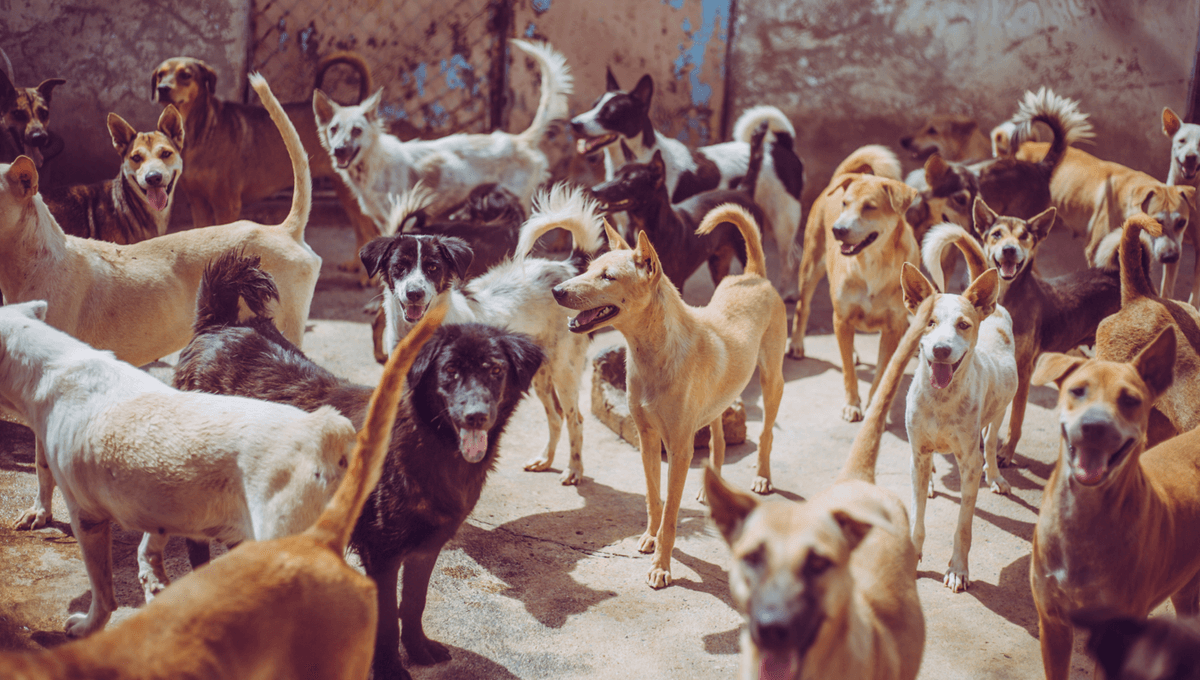
The first English colonizers to settle in North America were forced to eat dogs during an intense period of hardship, as shown by new archaeological discoveries. The grisly remains of this mini-famine also show how canine companions provide a unique insight into the power dynamics between European settlers and Indigenous peoples.
In a new study, researchers looked at the genetic ancestry of dogs in the Jamestown colony during the early 17th century to reveal new insights into early colonial America.
They found skeletal evidence of six dogs that had been butchered and consumed by the settlers of Jamestown. However, it’s safe to say this culinary choice was made out of necessity.
The research highlights a period known as the Starving Time, around the winter of 1609-1610. Wracked by harsh weather, violence with neighboring tribes, poor harvests, and lack of supplies, the Jamestown colony came very close to collapse due to severe starvation. The dogs, it seems, were consumed simply because there was nothing else to eat.
“Although the consumption of dog flesh in modern Western societies is considered taboo, there is a long history of eating dogs during periods of stress in England and other parts of Europe. This behavior meant that the occupants of Jamestown acted like other early Spanish, English, and French colonists who consumed dog flesh in times of need,” the study authors write.
Genetic analysis of the bones suggests that European settlers were consuming dogs with strong Indigenous North American ancestry. The six butchered dogs found at Jamestown had genetic similarities with Hopewellian, Mississippian, and Late Woodland period dogs from eastern North America.
This raises some interesting questions. It’s known that Europeans brought dogs to the Americas for a variety of tasks, like catching pests, herding animals, and physical protection. It’s also assumed they were deeply invested in the purity of their dog breeds and maintained the different breeds for separate tasks.
However, these results suggest that the European dogs and Indigenous dogs were rampantly interbreeding with each other. Perhaps this was the result of trade between Jamestown colonists and local Native Virginian groups, or maybe it suggests Native people resided within James Fort in the early occupation of the colony (before the relationship turned sour).
Either way, the findings show “the colonists and Tsenacomocoans likely had little concern for possible interbreeding between these dogs and English dogs,” the researchers suggest.
“The ancestry of the Jamestown dogs provides insight into European and Indigenous management of their dogs. Dogs with ancestry predominantly from Europe suggests that either British, Powhatan, or both groups kept their dogs from interacting with each other to maintain specific behaviours or observable phenotypes important to that group,” Ariane E. Thomas, lead researcher and a PhD candidate at the University of Iowa’s Department of Anthropology, said in a statement.
“However, a high proportion of Indigenous dog ancestry suggests a more complex engagement between the British and Powhatan peoples at Jamestown and less emphasis on maintaining the separation between dogs and their association with settlers. Identifying Indigenous dogs at Jamestown suggests this second, more complex dynamic is more representative of history,” explained Thomas.
Ultimately though, the Indigenous American dogs were outbred by the European dogs. Other genetic research has shown the “near-complete replacement” of maternal Indigenous dog ancestry by European dog lineages during the colonial period of America.
“Like other archaeological research that ignores the multifaceted nature of Indigenous presence and persistence within the ongoing context of colonialism, the loss of Indigenous dogs is an under-explored issue of colonial impacts in the Americas,” the authors write.
The study is published in the journal American Antiquity.
Source Link: First English Settlers In North America Had To Eat Dogs To Stay Alive